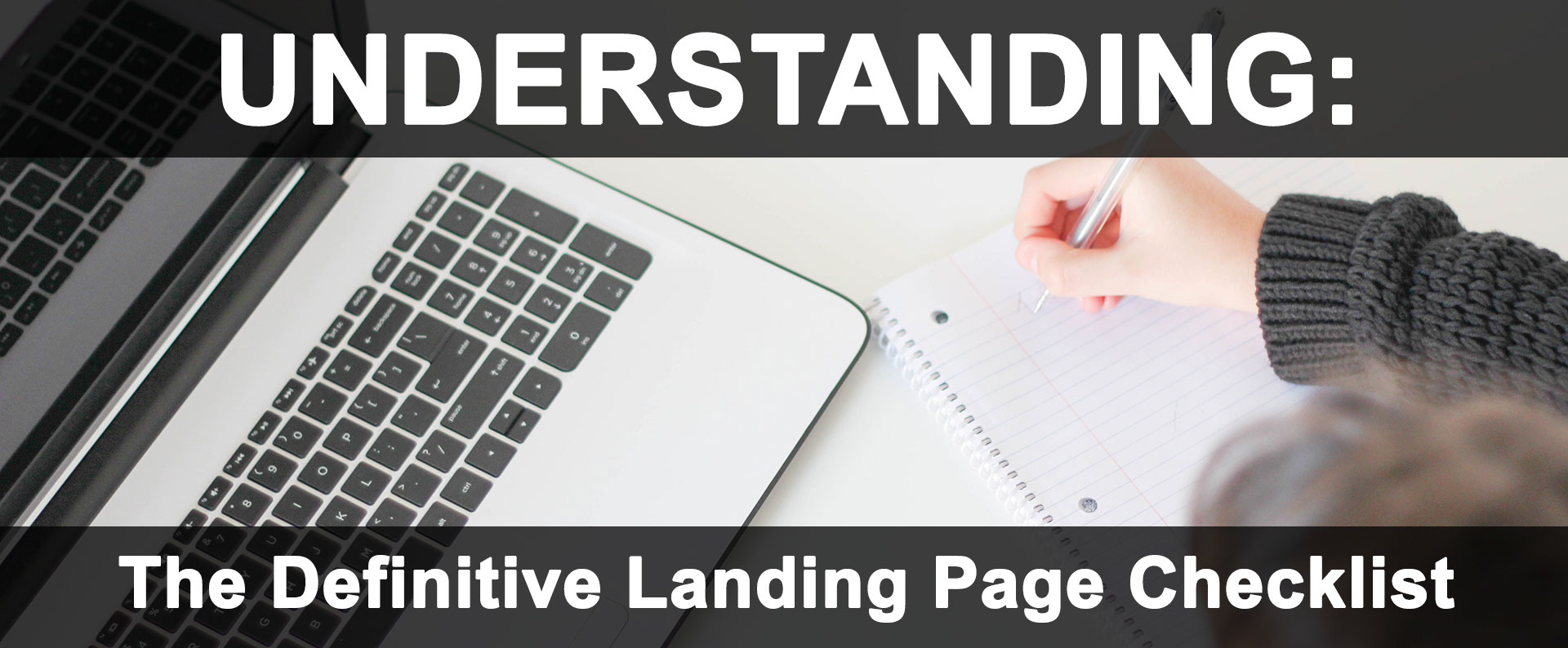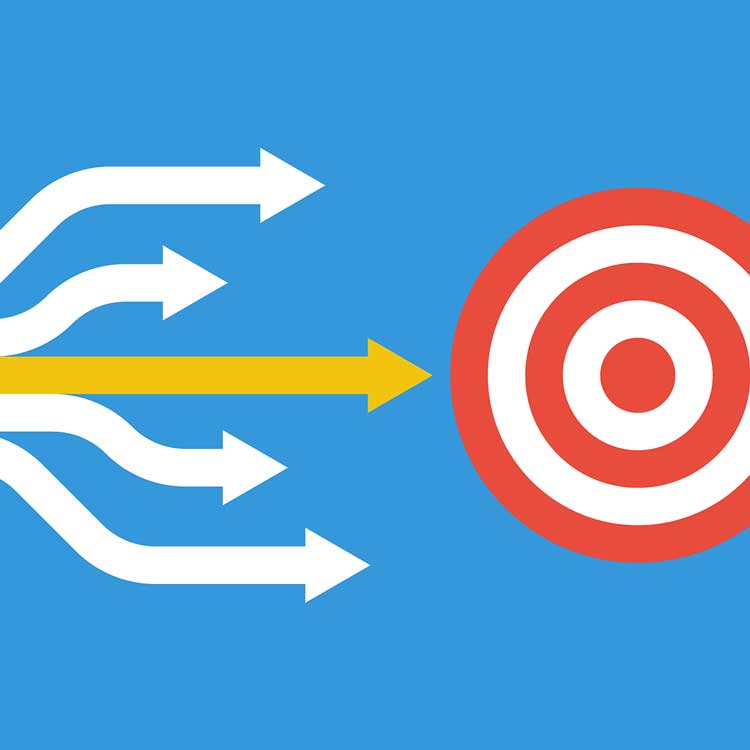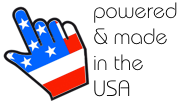Today’s digital marketing tools enable any business to easily generate leads by optimizing web traffic conversion from offer or advertisement to ACTION. Such tools allow one to quickly build high-converting Landing Pages, Google Ads, and Facebook ad campaigns that convert quality web traffic into MQL’s (Marketing Qualified Leads) and highly interested loyal customers.
Lead Generation landing pages (sometimes referred to as lead gen or lead capture pages) use a web form as the Call to Action, for the purpose of collecting lead data such as names and email addresses. This is the primary type of landing page used for B2B marketing.
The Anatomy of a Landing Page
A Landing Page is meant to generate a specific action one wants a user to take in relation to their business objectives. They help to improve relationships with customers, increase knowledge about a business, and the likelihood for success of its marketing campaigns by hyper-focusing on the connection of the target audience to the business.
Due to the fact that a Landing Page is designed to convert visitors into leads, it is different from other pages in that it follows this basic criterion: it has a form that allows one to capture a visitor’s information in exchange for the desired offer. For this reason, a Landing Page typically has one purpose. Most often, that single purpose is to collect a visitor's email address or other contact info.
The checklist below covers the best practices, must-do aspects, and the questions one must ask themselves when building a successful Landing Page . If one is nearly finished with a landing page, before publishing and sending it out, double-check that they have incorporated this free Landing Page design checklist!
● Does the page represent how a conversation would flow?
Think of the landing page as an introductory conversation. It is crucial that it capture the reader’s attention in the first few sentences. Does it provide the most critical information in the most logical (and compelling) order? Is the most important information up front? Does it flow well?
All these other checklist points are moot if it fails to have an interactive conversation with the reader. This is the opportunity to weed out the tire-kickers, and reel in the ideal target audience.
● Do the images load fast?
Good design has many aspects, and one of those is ensuring images are optimized. Size images so they load quickly but still look great on every device; as a rule of thumb, consider the largest device the image will display on, and crop it to that width.
That said, it should be pointed out that "dimensional size" is different than "file size". For a file to load fast, the file size should be as small as possible without sacrificing quality; however, because the quality is subjective, the rule of thumb is that "featured images" should be under 150k and all other images under 50k.
With today’s average internet speeds being between 5 and 12 Mbps (Megabits per second) for mobile devices, stick to the above guidelines and there should be no problem with the page loading quickly.
● Is the design simple? "When in doubt, leave it out!"
Use the "design" to tell a story. Every design should elicit emotion and each element should work to drive visitors toward a conversion goal (most often to engage in a single call to action). The design should spotlight the key content that needs to be communicated and support the copy, rather than distract from it.
From the CTA (Call-To-Action) to colors, from images to layout; when designing a landing page, one must have a goal in mind. In most cases, the goal is all about having a high-level conversation: to capture those visitors who are already seeking the product or services of the business, and who are ready to buy.
● Is it designed with a mobile mindset?
As of 2020, 68.1% of all mobile phone users access the Internet from their mobile phone; as such, it’s critical to ensure users can view the Landing Pages and fully interact with the content.
This is not just a fad or a craze either -- as mobile traffic was responsible for 63.4% of internet traffic in 2019, up from 52.2% of internet traffic in 2018 -- compared to 50.3% from 2017. However, while the total percentage of mobile traffic now exceeds desktop traffic, engagement is still higher on a desktop.
● Is the brand’s alignment ensured?
There are many templates out there to help build a Landing Page, however, remember that at their best, templates are merely rough drafts. One needs to customize them to match the brand.
For the highest effectiveness specific to lowering conversion anxiety, create a comfort level by ensuring all branding is aligned. This also rings true for all branding components, including logo and style. While this sounds like a no brainer, one’d be surprised how many businesses overlook this.
● Is the visitor’s full experience considered?
Where are visitors coming from and going to? A landing page is just a single step in someone’s journey across many touchpoints with the business. Be sure to plan out the content that leads visitors to the page, as well as what will be delivered after they take action.
Designing a Landing Page with the user’s experience top-of-mind will ensure messages have the most effectiveness. The user’s experience is a combination of how a visitor experiences the branding, design, content, and messaging; and likely, it is the single most important facet regarding the effective engagement conversion of a Landing Page (and website).
● Does it show street-cred?
With the potential of hundreds — if not thousands — of businesses pitching the same products & services, is the company seen as credible? When it’s appropriate, include testimonials or reviews that entice visitors to take action. Use customer photos as well as testimonials to help build credibility.
So, how does one create business credibility? A credible source makes for quicker and firmer decisions. In a testimonial, a credible person is an expert (experienced, qualified, intelligent, skilled) who is seen as trustworthy (honest, fair, unselfish, caring) because of verifiable history. Research shows that creating a hyperlink directly to that person (e.g their LinkedIn profile) increases testimonial credibility two-fold.
● Is traffic data setup to test?
One of the most common missed components of a Landing Page is that there are measurable metrics in place. A/B testing, as well as overall traffic data, is crucial to an effective Landing Page design. Accuracy in traffic data collection is as fundamentally important on the web as it is in real-life.
As an example, a transportation engineer designing a road puts an enormous amount of design-energy into traffic flow projections. It is equally crucial that the company utilize that same engineering insight into how to best approach the predicted web traffic flows. The resulting data serves as the foundation of planning for road, highway and bridge infrastructure.
In the Landing Page world, traffic engineering is that phase of engineering that deals with the planning, design, and operations of roads, streets and highways and their networks — conversion and engagement engineering are no different — as it is all about driving conversions through flow efficiencies, ease-of-use, and emotional-relevance. Driving conversions is an important part of the reader’s larger engagement, retention, and monetization strategies.













